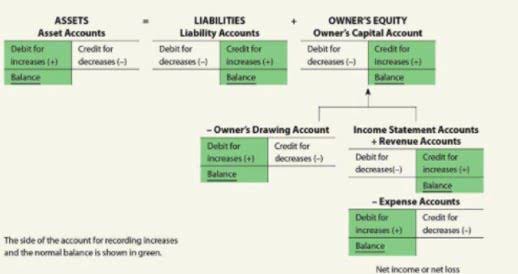Net Working Capital Guide, Examples, and Impact on Cash Flow

Get instant access to lessons taught by experienced private equity pros and bulge bracket investment bankers including financial statement modeling, DCF, M&A, LBO, Comps and Excel Modeling. Mr. Arora is an experienced private equity investment professional, with experience working across multiple markets. Rohan has a focus in particular on consumer and business services transactions and operational growth.
Q: What is change in working capital on the balance sheet?
The Change in Working Capital tells you if the company’s Cash Flow is likely to be greater than or less than the company’s Net Income, and how much of a difference there will be. Learn accounting, 3-statement modeling, valuation/DCF analysis, M&A and merger models, and LBOs and leveraged buyout models with 10+ global case studies. In 3-statement models and other financial models, you often project the Change in Working Capital based on a percentage of Revenue or the Change in Revenue. Double Entry Bookkeeping is here to provide you with free online information to help you learn and understand bookkeeping and introductory accounting.
How to Find Change in NWC on Cash Flow Statement (CFS)
- If a transaction increases current assets and current liabilities by the same amount, there would be no change in working capital.
- Conceptually, the operating cycle is the number of days that it takes between when a company initially puts up cash to get (or make) stuff and getting the cash back out after you sell the stuff.
- Working capital could be temporarily negative if the company had a large cash outlay as a result of a large purchase of products and services from its vendors.
- In many cases, excess inventory is driven by specific operational issues—for example, low reliability in one stage of a multistep manufacturing process.
- An increase in the balance of an operating asset represents an outflow of cash – however, an increase in an operating liability represents an inflow of cash (and vice versa).
Negative working capital is when current liabilities exceed current assets, and working capital is negative. Working capital could be temporarily negative if the company had a large cash outlay as a result of a large purchase of products and services from its vendors. Given a positive working capital balance, the underlying company is implied to have enough current assets to offset the burden of meeting short-term liabilities coming due within twelve months. Understanding the factors driving changes in working capital is essential for evaluating a company’s financial health and operational efficiency.

How to Calculate Change in Net Working Capital (NWC)

By calculating the change in working capital, you can better understand your company’s capital cycle and strategize ways to reduce it, either by collecting receivables sooner or, possibly, by delaying accounts payable. A company’s collection policy is a written document that includes the protocol for tackling owed debts. If you’re seeking to increase liquidity, a stricter collection policy could help. Cash comes in sooner (and total accounts receivable shrinks) when there is a short window within which customers can hold off on paying.
Calculating net operating income in multifamily real estate

Unlike working capital, it uses different accounts in its calculation and reports the relationship as a percentage rather than a dollar amount. Companies can forecast future working capital by predicting sales, manufacturing, and operations. Forecasting helps estimate how these elements will impact current assets and liabilities. Understanding how changes in working capital can affect cash flows is important for a good financial model.
Conversely, a large decrease in cash flow and working capital might not be so bad if the company is using the proceeds to invest in long-term fixed assets that will generate earnings in the years to come. Working capital is a snapshot of a company’s current financial condition—its ability to pay its current financial obligations. Cash flow looks at all income and expenses coming in and out of the company over a specified time period, providing you with the big picture of inflows and outflows.

That comes at a potential cost of lower net sales since buyers may shy away from a firm that has highly strict credit policies. Current assets are economic benefits that the company expects to receive within the next 12 months. The company has a claim or right to receive the financial benefit, and calculating working capital poses the hypothetical situation of liquidating all items below https://www.bookstime.com/ into cash. Net working capital is a tool used by small business owners better to understand the current financial situation of their enterprise. If the change in NWC is positive, the company collects and holds onto cash earlier. However, if the change in NWC is negative, the business model of the company might require spending cash before it can sell and deliver its products or services.
He has been a manager and an auditor with Deloitte, a big 4 accountancy firm, and holds a degree from Loughborough University. It is important for a business to have a simple system to monitor working capital and changes in working capitol, by for example, calculating working capital as a percentage of sales. Changes in net working capital refers to how a company’s net working capital fluctuates year-over- year.
As the different sections of a financial statement impact one another, changes in working capital affect the cash flow of a company. Aside from gauging a company’s liquidity, the NWC metric can also provide insights into the efficiency at which operations are managed, such as ensuring change in net working capital cash flow short-term liabilities are kept to a reasonable level. Cash and cash equivalents, as well as debt and interest-bearing securities, are non-operational items that do not directly contribute toward generating revenue (i.e. not part of the core operations of a company’s business model).
- The working capital of a company—the difference between operating assets and operating liabilities—is used to fund day-to-day operations and meet short-term obligations.
- This can include taxes due within the next year, accounts payable, salaries due, and other short-term expenses.
- By analyzing historical data and projecting a company’s incremental net working capital (NWC), management and equity analysts can grasp a better understanding of the near-term capital investment need (i.e. equity injection).
- For example, consider a manufacturing company facing challenges in collecting receivables from customers, leading to a significant increase in A/R.
- Positive free cash flow doesn’t always correspond with other indicators used in technical analysis.
If your net working capital one year was $50,000 and the next year it was $75,000, you would have a positive net working capital change of $25,000. A decrease in cash, for example, after purchasing a new property or equipment, will decrease working capital; conversely, working capital will also rise when cash increases. Presenting historical data regarding working capital and making future projections about it has to be clear and immaculate. In addition, you have to know and implement the Excel modeling best practices so that your working capital model stands out.